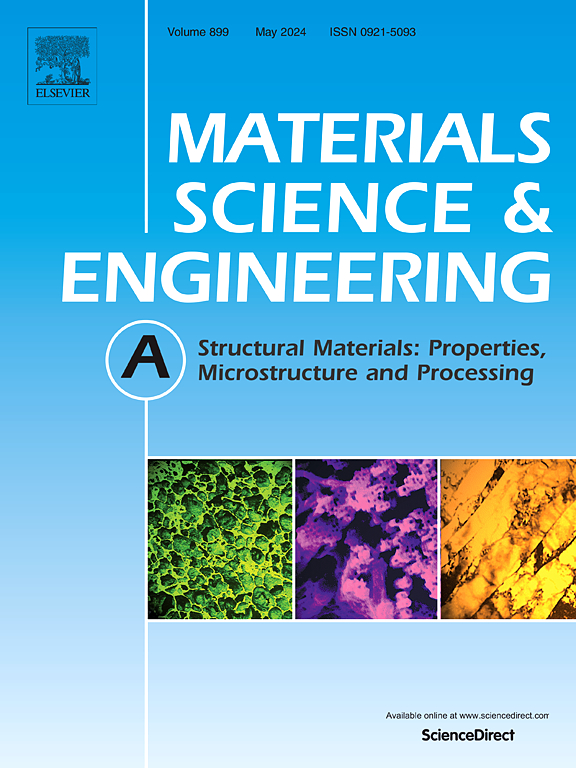旋转摩擦法线弧定向能沉积Al-Zn-Mg-Cu合金的组织与力学行为
IF 7
2区 材料科学
Q1 MATERIALS SCIENCE, MULTIDISCIPLINARY
引用次数: 0
摘要
提出了一种将层间旋转摩擦加工(RFP)与线弧定向能沉积(WA-DED)相结合的新型混合制造策略。该方法旨在解决WA-DED Al-Zn-Mg-Cu合金组织不均匀和力学性能不足的问题。研究了RFP对柱状颗粒破碎和取向再分布的影响。这些效应共同阐明了微观组织转变和力学性能增强的多尺度机制。结果表明:在RFP过程中,剪切变形和摩擦加热的协同作用有效地阻断了粗柱状晶粒的定向生长,形成了由细晶区和粗晶区交替组成的非均质组织。同时,原先沿晶界偏析的脆性S相(Al2CuMg)发生溶解,促进了高密度细η′析出相的形成。在位错积累、晶粒细化和Orowan循环等强化机制的共同作用下,合金的极限抗拉强度和屈服强度分别提高了33.3%和15.1%,伸长率提高了9.1%,达到了强度和塑性的良好平衡。提出的“增材沉积+层间塑性扰动”策略为高性能铝合金部件的高完整性制造提供了有价值的理论见解和工程潜力。本文章由计算机程序翻译,如有差异,请以英文原文为准。
Microstructure and mechanical behavior of Al-Zn-Mg-Cu alloy fabricated by wire-arc directed energy deposition with rotating friction processing
This study introduces a novel hybrid manufacturing strategy by integrating interlayer rotary friction processing (RFP) with wire-arc directed energy deposition (WA-DED). This approach aims to resolve the microstructural heterogeneity and insufficient mechanical performance commonly observed in WA-DED Al–Zn–Mg–Cu alloys. A comprehensive investigation was conducted to evaluate the influence of RFP on columnar grain fragmentation and orientation redistribution. These effects collectively elucidate the multiscale mechanisms underlying the simultaneous microstructural transformation and mechanical performance enhancement. The results demonstrate that the synergistic effects of shear deformation and frictional heating during RFP effectively interrupt the directional growth of coarse columnar grains, leading to a heterogeneous structure composed of alternating fine- and coarse-grained regions. Simultaneously, the brittle S phase (Al2CuMg), which was originally segregated along grain boundaries, undergoes dissolution, while the formation of a higher density of fine η′ precipitates is promoted. Benefiting from the combined strengthening mechanisms of dislocation accumulation, grain refinement, and Orowan looping, the ultimate tensile strength and yield strength increased by 33.3 % and 15.1 %, respectively, while a notable elongation of 9.1 % was achieved, indicating an excellent balance between strength and ductility. The proposed “additive deposition + interlayer plastic disturbance” strategy provides valuable theoretical insight and engineering potential for the high-integrity fabrication of high-performance aluminum alloy components.
求助全文
通过发布文献求助,成功后即可免费获取论文全文。
去求助
来源期刊

Materials Science and Engineering: A
工程技术-材料科学:综合
CiteScore
11.50
自引率
15.60%
发文量
1811
审稿时长
31 days
期刊介绍:
Materials Science and Engineering A provides an international medium for the publication of theoretical and experimental studies related to the load-bearing capacity of materials as influenced by their basic properties, processing history, microstructure and operating environment. Appropriate submissions to Materials Science and Engineering A should include scientific and/or engineering factors which affect the microstructure - strength relationships of materials and report the changes to mechanical behavior.
 求助内容:
求助内容: 应助结果提醒方式:
应助结果提醒方式:


